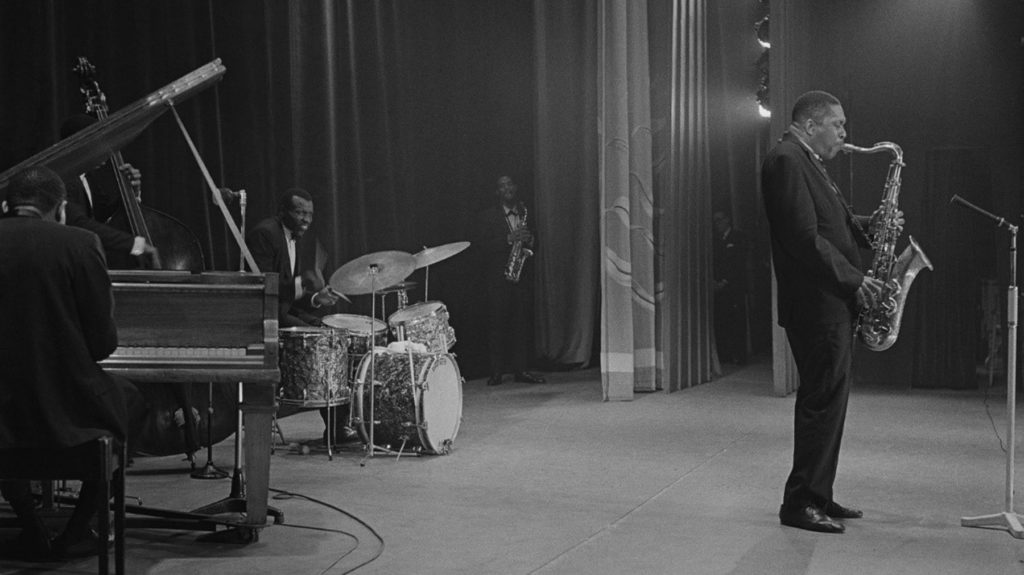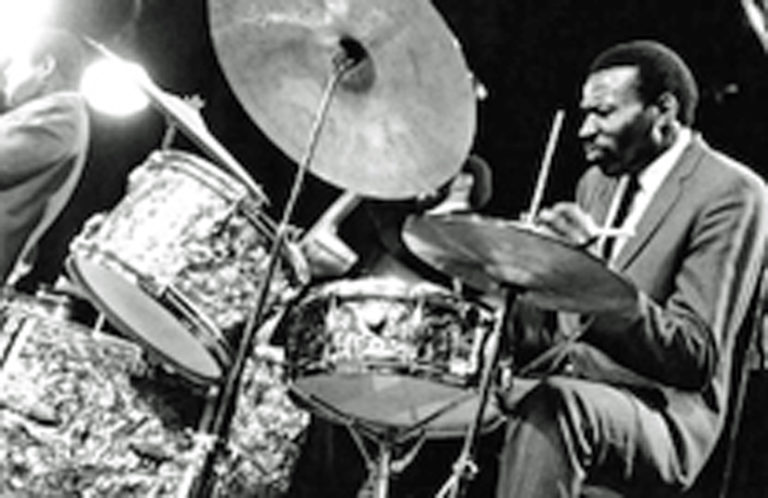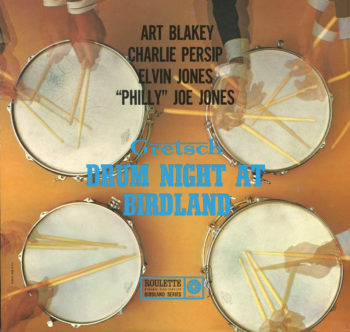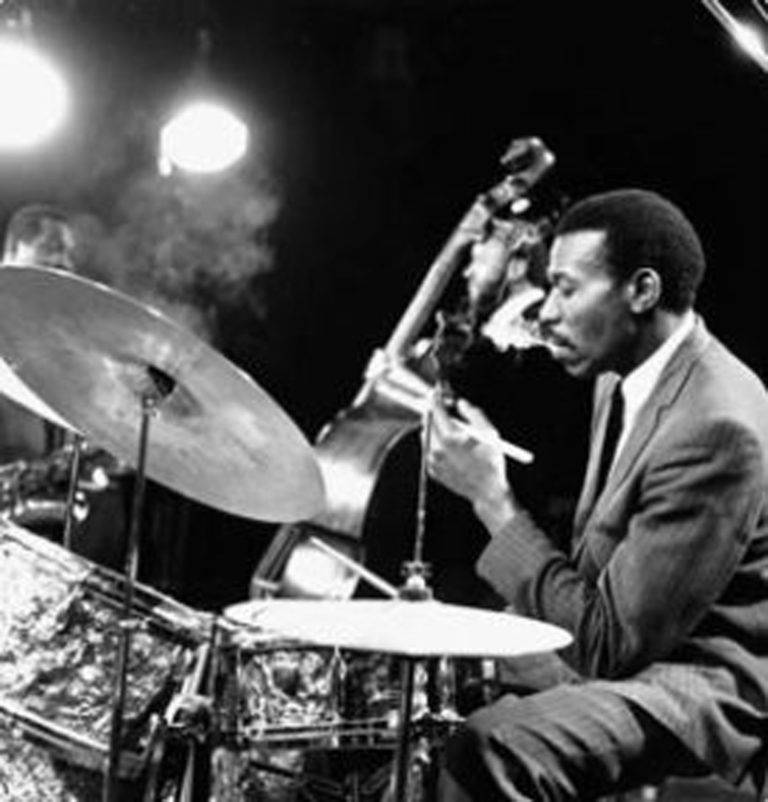NPR Highlights Jazz, Coltrane, and Gretsch Great Elvin Jones
On this past September 10th, National Public Radio’s Morning Edition program ran an intriguing feature titled: Not All “Lost” Jazz Albums Are Created Equal. It focused on several albums, either recently or about to be released, that contain previously unreleased material by iconic jazz artists like John Coltrane, Miles Davis, and Stan Getz.
One of those albums was Both Directions at Once: The Lost Album, which featured material from 1963 recording sessions and reference tapes, and was released in 2018. Another is Blue World, set to be released on Impulse! Records on September 27. It features Coltrane recordings from 1964.
If you didn’t get a chance to hear the broadcast on radio, here’s a link to the written transcript. It should come as no surprise to any jazz aficionado—nor to any fan of Gretsch drum history—that a photo from that transcribed version, showing John Coltrane performing, also includes the legendary Elvin Jones on drums.
In the photo above from the National Public Radio feature transcription, as was his trademark, Elvin is sporting a wide grin while burning on the drums behind John Coltrane. (Bill Wagg/Redferns/Getty Images)
Elvin was Coltrane’s drummer for the most important years of the saxophonist’s career. And as important a figure as was Coltrane in moving jazz forward, so was Elvin Jones. In fact, it can be argued that Elvin single-handedly bridged the gap between hard bop and avant-garde jazz, and changed the very nature of drumming ever after. As such, it’s fitting that he be depicted in a piece done on September 10th, 2019, since Elvin would have celebrated his ninety-second birthday on September 9th.
Elvin’s singularity dates back to his early career. After leaving the army in 1949 he played with his brother Thad in a Detroit band led by Billy Mitchell. In 1955 he moved to New York, where he worked as a sideman in the bands of Charles Mingus, Teddy Charles, Bud Powell, and Miles Davis.
By 1960 Elvin was an established figure on the New York jazz scene. As such, he often took part in a unique series of drumming events at New York City’s famous Birdland nightclub, where the great jazz drummers of the day (who were all Gretsch drum artists) would come to play separately and together. One of those sessions, which took place in April of 1960, is documented on the unparalleled jazz album Gretsch Night At Birdland. Along with Elvin, it features performances by three other great Gretsch drum artists: Art Blakey, Philly Joe Jones, and Charlie Persip.
But it was when Elvin joined the John Coltrane quartet in 1960 that musical history was made. Elvin found a kindred spirit in Coltrane, and (with the help of bassist Jimmy Garrison and pianist McCoy Tyner) the two pioneers explored the boundaries of jazz improvisation and rhythmic structure. This exploration eventually culminated in the 1965 masterpiece, A Love Supreme. That recording is considered a milestone in the history of jazz, melding the hard bop stylings of Coltrane’s early career with what came to be called “modal” and “free” jazz.
Elvin’s sense of timing, polyrhythms, dynamics, timbre, and legato phrasing set a totally new standard for drumming—one that led Life magazine to tout him as “the world’s greatest rhythmic drummer.” His unique approach baffled some listeners, and inspired others. And not just other jazz drummers. He was a major influence on many rock drummers as well, including Jimi Hendrix’s Mitch Mitchell and Cream’s Ginger Baker.
Although Elvin passed away in 2004, dozens of today’s top drummers speak of him with reverence and awe. To quote one stellar jazz drummer: “Elvin was committed to playing the drums in a different way. After he came on the scene, everyone else played differently too.”
Some sounds from the past:
Hear Elvin with the classic mid-1960s John Coltrane Quartet playing “Impressions”—including a duet segment where Elvin and Coltrane play together.
Elvin simply burns in an unusual two saxes/bass/drums quartet format in 1973.
Elvin explains the concept of polyrhythmic styles, and demonstrates his solo technique, circa 1979.
Here’s Elvin in a clip from 1979 playing with his own quartet. His playing with the band is powerful enough…but the solo….!





